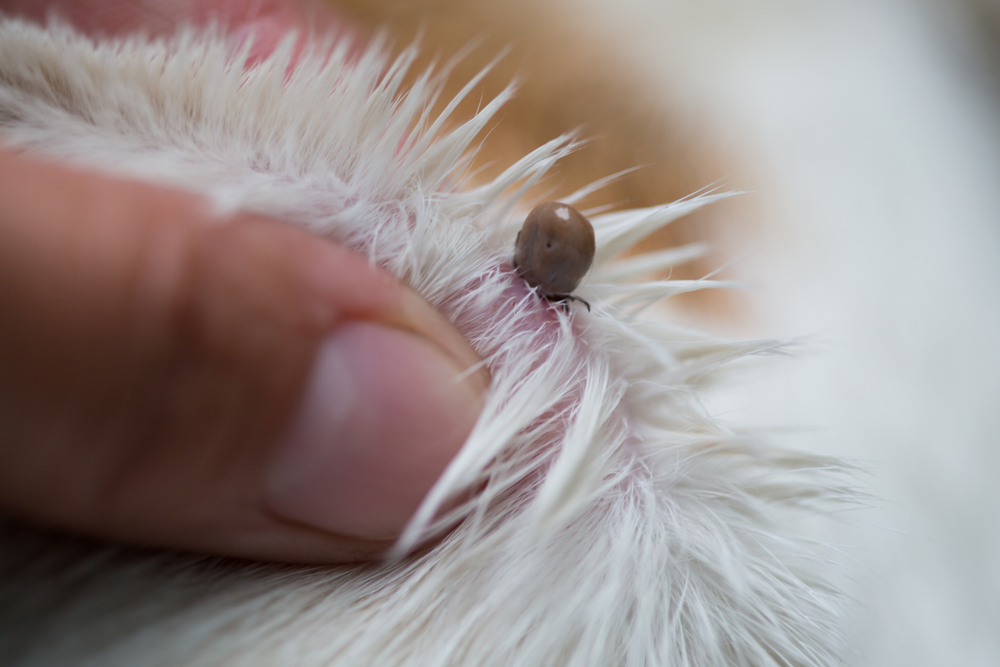- Home
- All Topics
- Ticks and Fleas – What…
Ticks and fleas are common parasites that can affect cats and dogs. Here is some information about these parasites and how to prevent and treat infestations:
Ticks: Ticks are small arachnids that can attach themselves to a pet’s skin and feed on their blood. They can transmit diseases such as Lyme disease, Rocky Mountain spotted fever, and ehrlichiosis to both pets and humans.
Prevention and Treatment: To prevent tick infestations, it’s important to use tick preventatives recommended by your veterinarian. These may include topical treatments, oral medications, or collars that repel or kill ticks. You can also help reduce your pet’s exposure to ticks by avoiding areas where ticks are prevalent, checking your pet for ticks after spending time outdoors, and removing any ticks you find promptly.
If your pet does develop a tick infestation, it’s important to remove the tick promptly using tweezers or a tick removal tool. Your veterinarian can also provide guidance on how to safely and effectively remove ticks.
Fleas: Fleas are small, wingless insects that can infest pets and homes. They can cause skin irritation, itching, and even transmit diseases to pets.
Prevention and Treatment: To prevent flea infestations, it’s important to use flea preventatives recommended by your veterinarian. These may include topical treatments, oral medications, or collars that repel or kill fleas. You can also help reduce your pet’s exposure to fleas by keeping your home and yard clean and using flea control products in your home.
If your pet does develop a flea infestation, it’s important to treat both your pet and your home. Your veterinarian can provide guidance on the best flea control products to use and how to properly treat your home to eliminate fleas.
Overall, preventing and treating tick and flea infestations is important for the health and well-being of your pet. Be sure to talk to your veterinarian about the best ways to prevent and treat these parasites for your individual pet.

You should not remove a tick forcefully because it can increase the risk of infection and other complications. When a tick is removed forcefully, it can cause the tick’s body to break apart and remain lodged in the skin, which can lead to an infection.
In addition, forcefully removing a tick can cause the tick to regurgitate its contents into the skin, including bacteria and other pathogens that can cause disease. This can increase the risk of infection and make it more difficult to diagnose and treat any diseases that the tick may have transmitted.
To remove a tick safely and effectively, it’s important to use proper techniques and tools. Special tick removal tools, such as tick hooks or tick twisters, are designed to grasp the tick’s mouthparts without squeezing its body, allowing you to remove the tick intact. Alternatively, you can use fine-tipped tweezers to grasp the tick’s mouthparts as close to the skin as possible and pull the tick straight out with steady pressure.
After removing a tick, it’s important to clean the bite area with soap and water and monitor the area for any signs of infection or disease. If you notice any signs of infection, such as redness, swelling, or pus, or if you develop any symptoms of tick-borne illness, such as fever or rash, it’s important to seek medical attention promptly.

We Are In Your Community





